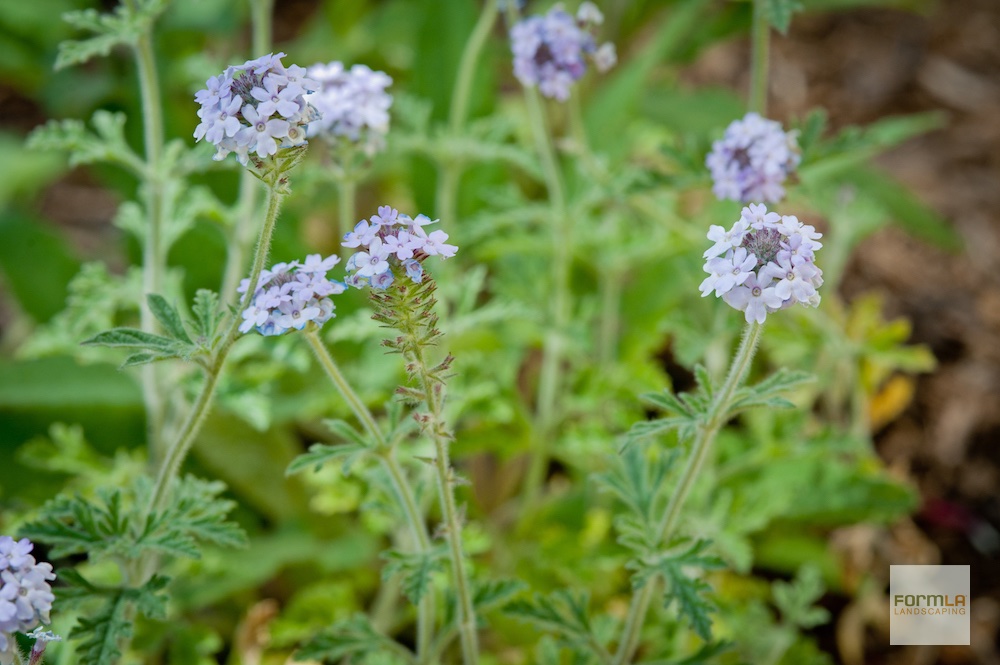SUN LOVING GROUND COVER: VERBENA LILACINA VS. LANTANA
By Cassy Aoyagi: Southern California is full of sun-lovers, two of which are truly pretty in pink. Hybrid Lantanas produce an array of unusual and striking colors, and both Verbena lilacina and Lantana produce flirty pink and lilac flowers as they soak up the sun. While they are both lovely performers, Verbena lilacina is the only true SoCal girl.

Lantana is native to parts of tropical America where ample water naturally occurs. It has adapted somewhat to our dryer climate, however moving to SoCal brings out Lantana’s high maintenance side. To adapt well, Lantana:
- Needs steadier heat than we have to give. Typicallly, Lantana is unable to withstand the mild to severe freezes that occasionally occur throughout Southern California. In many places, Lantana performs as an annual and, like many visitors, enjoys only our summers. If Lantana survives a SoCal winter, it will need pruning to the ground at early spring to bolster new growth.
- Flourishes with extra water. A little extra water to accommodate the dryer conditions makes Lantana a long and prolific bloomer, one of the attributes that admirers favor so.
- Needs an on-call stylist. The extra water Lantana needs to survive tends to bolster excessive growth. Lantana will creep, crawl and climb over and around anything with in its reach, thief not frequently trimmed during growing season.
- Keeps bad company. Lantana creates conditions ideal for annual weeds, and we often find annual volunteers hanging close to it.
- Can be a little poisonous. Fruits are poisounous and prolific following a heavy bloom.
Verbena lilacina is native to Baja California. A real SoCal charmer, Verbena lilacina adapts well to broader Southern California climates. In sharp contrast to the high-maintenance Lantana, Verbena lilacina:
- Adapts well. Verbenas are able to thrive inland, an advantage over many coastal natives, let alone Lantana.
- Performs dependably. While performance will vary based upon specific conditions, you can count on an approximately 3×3 or wider perennial shrub with prolific lilac flowers almost year round.
- Needs little to produce a show. If it is deadheaded or laced out periodically, Verbena lilacina will stay handsome year round without much cutting back. Ideally a heavier prune would take place in Nov-Jan, but, if producing vibrant blooms, lilacina can get by with a trim. Even amoung Verbenas, lilacina delivers a standout performance, outliving cousin Verbena goodingii.
- Shares the spotlight. Its light and airy texture matches well with heavier textured foliage like Sulfur buckwheats, Chalk Dudleyas and Blue Fescues.
For more guidance on where to plant big dry ones, see our past Wet-to-Dry Exchange articles.